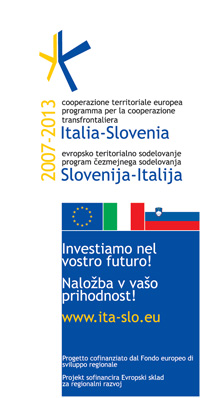Study area
The Rosandra Valley, just a few minutes from Trieste, is a sort of compendium of the Karst, a giant rift between the M.Carso and the Karst of Bazovizza, one of the rare cases of surface hydrography in the Italian Karst. The Val Rosandra is well known to the inhabitants of Trieste as a popular rock climbing and hiking destination.

Most people know that it is home to a rich and interesting flora, but only a few are able to fully appreciate the rich biodiversity of the valley, which can be summed up in just a few numbers: more than 1,000 fungi, 988 vascular plants, approx. 300 lichens, ca. 150 bryophytes (mosses and liverworts), and ca. 100 species of Myxomicetes, for a total of ca. 2,700 infrageneric taxa. There is a lack of reliable data on cyanobacteria, algae and microfungi, with which the total number of taxa would be much higher. The Val Rosandra is therefore an important reservoir of biodiversity which deserves attention and protection as a true World Heritage Site, like many historical cities and many natural environments famous today because those who live there and live in them have been able to appreciate them, conserve them, and make them known to world.

The Val Rosandra reflects the history of the vegetation of the Karst, but it has many original features. The geomorphology makes it a ‘unicum’ in the Trieste Karst: agriculture was and is limited to small areas of Flysch such as near Botazzo, grazing is today almost completely abandoned and even in the past it was made difficult by the steep and stony slopes. The valley still retains aspects of the prehistoric vegetation of the Karst, especially on rocks and scree slopes. The landscape is different from that of the rest of the Trieste Karst. The climbers who use the rock walls as a school have wrongly compared it to an ‘alpine’ landscape, whereas it rather recalls the great valleys of Dinaric Dalmatia, with the major forms of erosion and the alternation of shrubs and almost bare surfaces; also the geologic structures are similar, with fissured limestone, scree, etc., the species are often the same and grow in similar associations. Thus, certain sections of M. Carso are extraordinarily reminiscent of the hinterland of Rijeka in Croazia.
In Val Rosandra the relationships between vegetation and physical factors are clearer than in the Alps, where the complicated orography and the presence of many types of rocks create a complex pattern of ecosystems. In Val Rosandra the landscape can be read easily, becaue of the modest development of the reliefs and presence of only two dominant types of substrate: limestone and Flysch. The areas with Flysch have an almost ‘Apenninic’, landscape, while those with limestone give rise to a ‘Balkan’ landscape. For further details we refer to the book by Nimis et al. (2006).
Literature
Partner/Partnerji: Università di Trieste, Dip. di Scienze della Vita (Lead Partner), Prirodoslovni Muzej Slovenije, Ljubljana, Univerza na Primorskem -Università del Litorale Koper/Capodistria, Università di Padova, Dip. di Biologia, Zavod Republike Slovenije za šolstvo Ljubljana, Comune di San Dorligo della Valle - Občina Dolina, Consorzio del Parco Regionale del Delta del Po Emilia Romagna, Agenzia Regionale per la Protezione dell’Ambiente del Friuli Venezia Giulia (ARPA - FVG), Gruppo di Azione Locale Venezia Orientale (GAL Venezia Orientale - VEGAL), Triglavski Narodni Park, Univerza v Novi Gorici. Progetto Strumenti interattivi per l’identificazione della biodiversità: un progetto educativo in un’area transfrontaliera (SiiT): finanziato nell’ambito del Programma per la Cooperazione Transfrontaliera Italia-Slovenia 2007-2013, dal Fondo europeo di sviluppo regionale e dai fondi nazionali. Projekt Interaktivna določevalna orodja za šole (SIIT): spoznavanje biotske pestrosti na čezmejnem območju sofinancirana v okviru Programa čezmejnega sodelovanja Slovenija-Italija 2007-2013 iz sredstev Evropskega sklada za regionalni razvoj in nacionalnih sredstev. |  |
||
| © Copyright 2013 SiiT. | |||
